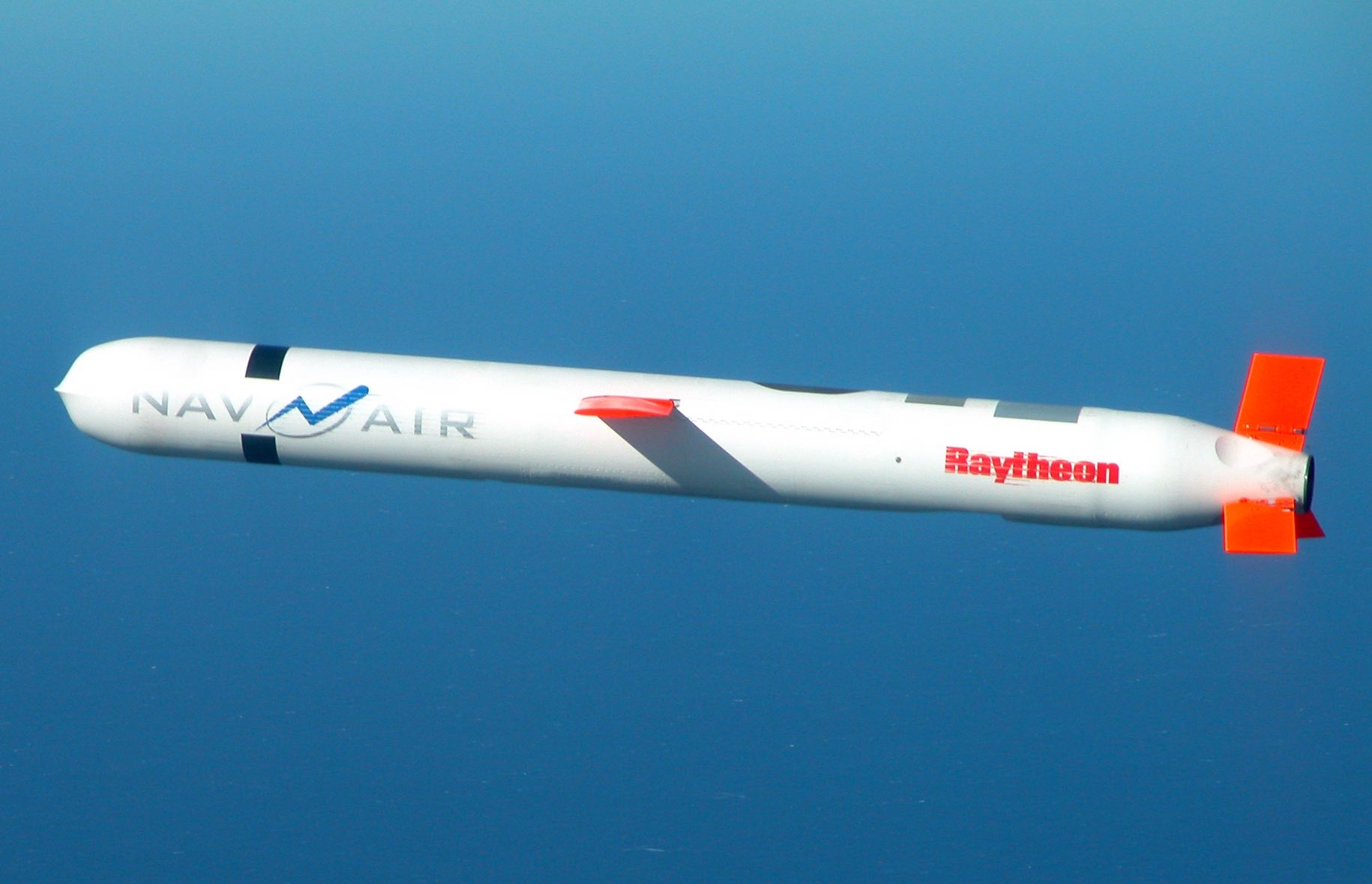


The announcement, made en route to Israel aboard Air Force One, marks perhaps the most assertive U.S. signal yet of intent to shift the balance in favour of Kyiv. Far from reckless posturing, the move may represent a strategic recalibration with meaningful upside for Ukraine, its allies and the broader quest for stability in Europe.
Trump’s comments came during a press briefing aboard Air Force One, where he said he “might tell [Putin] that if the war is not settled, we may very well send them Tomahawks.” The Tomahawk is not a trivial toy—it is a precision long-range cruise missile able to strike deep into enemy territory. As Trump himself admitted, “that’s a step up.” But for Ukraine, it could also be a step toward shifting the calculus of deterrence.
Importantly, Trump clarified that the U.S. would not deliver the missiles directly to Kyiv. Instead, they would be provided through NATO channels. This caveat helps the administration maintain a degree of plausible deniability while still sending a clear signal. It tempers the risk of an immediate escalation while preserving leverage.
The timing is not accidental. Russia has stepped up attacks on Ukraine’s energy infrastructure ahead of winter, intending to sow chaos and demoralize the population. Trump’s announcement reframes the narrative: if Moscow seeks to win by freezing a nation, Kyiv may now—or soon—have the means to fight back more effectively.
What’s compelling about this development is its potential multiplier effect. Ukraine has long asked for long-range systems. The mere possibility of Tomahawks changes the dynamics of deterrence: Russia must now consider not only losses in occupied zones, but vulnerabilities far deeper inside its territory. That could pressure Putin to recalibrate or at least reevaluate his calculations.
Zelenskyy swiftly responded, underscoring that any future Tomahawks would be used only against military objectives, not civilian areas—emphasising Ukraine’s moral distinction in warfare. This clarity makes it easier for Western allies to support Ukraine without being drawn into reckless escalation. Ukraine’s restraint strengthens its moral and diplomatic footing.
Moreover, the boldness of Trump’s statement may catalyse follow-on commitments from other NATO or European states. If Washington tips the scales, it incentivizes allied nations to complement the decision with air defence systems, intelligence, logistics, and diplomatic backing. The Tomahawk possibility becomes a rallying cry, not merely a headline.
Crucially, Trump framed his proposal not as unconditional military escalation, but as a diplomatic tool. He emphasized that he would speak to Putin—“in all fairness” —before any deployment. The idea is not to blindside Moscow, but to warn it: negotiate or face consequences.
Seen this way, the Tomahawk option becomes a calibrated escalation with built-in warnings rather than a reckless slide into all-out war. It may succeed in bringing Russia to the table rather than pushing all sides into open confrontation.
The Kremlin, unsurprisingly, expressed “extreme concern.” Yet past objections have rarely altered Western military decisions when strategic calculations demand it. The critical question now: does Russia see enough risk that further escalation becomes a genuine diplomatic incentive?
For his part, Trump has been evolving his Ukraine posture. Earlier in his administration, he was more cautious about direct involvement, pushing Ukraine to negotiate more. But over recent weeks, he has signalled a sharper, more robust approach. The Tomahawk announcement could be interpreted as part of that shift: a more muscular U.S. posture in defence of European peace.
This is not symbolic brinkmanship. The magnitude of deploying cruise missiles via NATO sends a clear message: the U.S. is willing to move beyond rhetoric if the war drags on. That signal alone could carry weight, even without full implementation.
From a political standpoint, it gives Trump a posture of firm leadership and charges him with safeguarding not just U.S. security interests, but transatlantic stability. In effect, he stakes a domestic and global reputation on whether this move restrains or reshapes Moscow’s options.
Of course, every escalation carries risk. Russia could retaliate in kind or intensify asymmetric warfare. NATO supply lines and escalation control will be under strain. Faulty intelligence or misapplication could provoke blowback.
Yet this is precisely why Trump’s framing matters. By tying the decision to military objectives, offering a warning to Putin, and insisting on NATO’s logistical role, he carves a safer path. The risk is mitigated—not eliminated—but it is not blind.
Moreover, the conditional nature of the threat allows for strategic withdrawal if circumstances shift. If diplomacy succeeds or Russia signals willingness, the Tomahawk option can be shelved. That flexibility is often lacking in more rigid escalatory strategies.
In war, hope is as valuable as firepower. Trump’s statement injects both symbolism and substance. For Ukrainians battered by years of conflict, it signals that their cause still commands global attention, and that the West is still prepared to confront Russian aggression with serious military tools.
For allies, it signals that deterrence may yet have teeth. Too long has the rhetoric of support outpaced the means to back it. The Tomahawk conversation narrows that gap.
For Russia, it introduces new uncertainty. Doubling down may carry even higher costs. Negotiation may appear less costly than continued escalation. Putin must now weigh deeper risks if he rejects diplomacy.
And for the wider world, it reminds us that power, when tied to principle and strategic clarity, remains a tool for possible peace, not perpetual stalemate.
Donald Trump’s announcement that he may authorise Tomahawk missile support for Ukraine is a bold, potentially consequential pivot. It is not military adventurism divorced from purpose—but a calibrated escalation intended to sharpen deterrence, reinforce alliances, and press Russia toward the table.
If implemented judiciously, it offers Kyiv a new lever of strength, puts Russia on notice, and elevates U.S. posture from rhetorical support to tangible realism. Ultimately, this may be one of those rare moments when escalation becomes a pathway to de-escalation—and to a more stable Europe.
The West Cannot Afford to Flinch: Ukraine’s Fight Is Our Fight